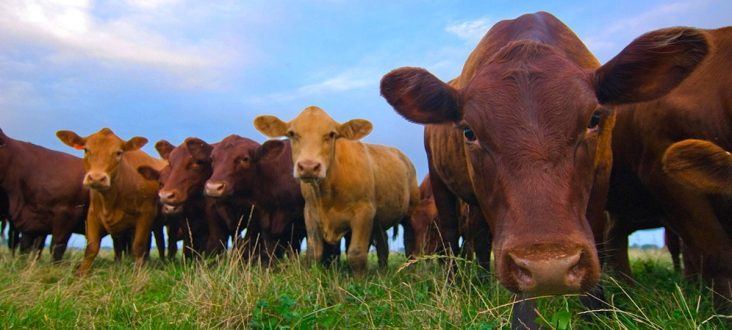Another deadly tick identified in the state’s cattle population
by July 11, 2024 11:25 am 2,353 views

An Asian longhorned tick, known for carrying deadly parasites that can impact cattle, has been found in another county in Arkansas. Researchers recently confirmed that the tick was found in a cattle herd in Boone County.
This type of tick, also known as bush, cattle or scrub tick, was first found in Arkansas in 2018 on a dog in Benton County. The tick can kill its host by swarming the animal but can also transmit a protozoan parasite called Theileria orientalis. One Theileria genotype, Ikdea, can impact cattle by attacking blood cells.
Since its arrival in Arkansas, the Asian longhorned tick has been confirmed in Benton, Independence and Washington counties with Boone County added last month.
Three researchers with the University of Arkansas System Division of Agriculture are collecting ticks as part of a broad surveillance project. They include extension entomologist Kelly Loftin, veterinarian and animal science professor Jeremy Powell, and assistant professor of entomology Emily McDermott.
The team aims to evaluate the prevalence of Asian longhorned ticks in Arkansas, determine whether Theileria orientalis is present in the tick population and evaluate host preference.
“Surveillance efforts in 2024 began in April and we’ve seen a significant increase in the Asian longhorned tick population from both on-animal and environmental tick collections,” Loftin said. “In our 2023 collection efforts, we found eight to 10 ticks at our site in Batesville and this year we found over 200. That site in Batesville has the most dramatic increase I’ve seen.”
The researchers were given a $270,000 U.S. Department of Agriculture grant to map the spread of these new ticks.
The tick, often the size of a sesame seed, can reproduce without a male. A single tick can lay up to 2,000 eggs, and hundreds of ticks can infest a single animal.
McDermott said it’s important to define exactly where this tick lives, as it’s been confirmed in the state but has likely not spread across Arkansas. She is hopeful that the USDA’s financial support will aid in the team’s ability to do just that.
The team will enlist citizens throughout the state for help with this mapping. Researchers will start by surveying a 1.5-kilometer radius in Benton, Independence and Washington counties. Within these boundaries, they will sample at least 20% of a herd of cattle.
If no longhorned tick is found, researchers will expand their surveillance to an 8-kilometer radius, repeating their methods until they identify the presence of the tick or reach the state line. If a surveillance site does test positive for tick presence, secondary surveillance will begin expanding in rings from the area, drawing a more definite boundary for where the tick is distributed throughout the state.
All ticks collected from cattle, and those collected from the trapping that researchers will also conduct at each site, will then be tested for Theileria orientalis Ikeda genotype.
The team first received a $15,000 internal animal health grant from the division before procuring the $270,000 USDA grant, which runs from July 2024 to June 2026.
The internal grant allowed preliminary data collection that confirmed a presence of the longhorned tick at the division’s Savoy and Batesville research locations in northwest and north-central Arkansas. Testing at the research station near Hope in the southwestern part of the state was negative.
Loftin said the presence of the tick in Batesville has increased considerably, illustrating its growing threat to the state’s cattle populations.
Loftin said the research was inspired in part by mysterious sicknesses in animals that mirrored the symptoms associated with anaplasmosis, a tick-borne disease commonly found in Arkansas. Testing for anaplasmosis, however, came up negative.
Once the longhorned tick attacks an animal, it can transmit Theileria orientalis Ikeda, which can kill up to one in 20 infected cattle, according to the USDA.
The presence of the longhorned tick in the United States caused researchers to question whether it could be carrying and spreading this disease throughout Arkansas.
Loftin said their research on the tick heightens producers’ caution of ectoparasites, or parasites that live on the exterior of a host.
“It seems like it’s getting to a point where ectoparasites are just as important as the internal parasites,” Loftin said.
The team’s research proves to be timely, with Theileria orientalis Ikeda being identified in Boone County, its first case and death in the state, within the last two months, as reported by the Arkansas Cattlemen’s Association.
Powell said that while there is no drug approved by the Food and Drug Administration to treat Theileria, the team hopes to use its findings to enhance producers’ prevention efforts.
McDermott also said it’s easier to intervene and reduce tick presence when their population size is small, as they can reach high population sizes very quickly.
Powell added that this knowledge could help producers deter ticks through more effective methods of pasture mowing and parasiticide use.
“If we’re able to get a better handle on the prevalence and incidence of the tick, and then also test those ticks for Theileria, we would have a better idea to pass information along to the producers,” Powell said.
